So to start things out this week, last time I spoke a bit about the SQUADRON SUPREME collection of 1997, into the print run of which Marvel Executive Editor Mark Gruenwald’s physical remains were mixed. Well, by a total fluke I came across the clipping below that was sent to me at the time by my Aunt, showing the very picture I ran last time. As I said then, versions of this piece were published in a myriad of newspapers worldwide through the Associated Press. So this is just one of an almost infinite number of similar reports. My Aunt helpfully dated this one as running on August 29, 1997, so twenty-six years ago practically to the day.
I’ve also been told that I can give you all details on a non-Marvel-related project that I contributed to:
Jim Beard has been publishing a series of books built around the theme of childhood nostalgia that look back on stuff that was important to him as a kid growing up, all under the Becky Books label. He’s done volumes dedicated to G.I.Joe, the Dark Shadows soap opera, and Imported Japanese Television. After I made mention publicly that I could have written an essay for that last volume in my sleep, Jim apparently felt obligated to invite me to do a piece for his next volume, which is dedicated to the original STAR TREK television series. Despite the fact that it wasn’t as strong an influence in my life as I’d guess it was to most of the other contributors, I agreed to give it a go.
So I’ll be joining a much more appropriate bunch of writers, including Derek Tyler Attico, Corinna Bechko, John C. Bruening, Ed Catto, Greg Cox, Keith DeCandido, John S. Drew, Gordon Dymowski, Michael Gordon, Robert Greenberger, Rich Handley, Ron Hill, Nancy Holder, Paul Kupperberg, Andrew Leyland, Tom Mason, Bobby Nash, Van Allen Plexico, Alan J. Porter, Alex Segura, Aaron Smith, Sorella Smith, Jeff Venture and Dayton Ward.
The book goes on sale this fall, and I’m sure that I’ll let you know when and where it’s available when the time comes. In the meantime, here’s Jim’s sales copy to give you the sense of it:
And the Children Shall Lead!
Though creator Gene Roddenberry endowed his groundbreaking 1966-69 science fiction show Star Trek with plenty of substance and style to engage and entertain adult viewers, it also amazingly attracted the attention of younger eyes and imaginations—and in doing so forged entire generations of Trek Kids!
Watching the original series for the first time was a heady experience for a child, so much so it often made such an indelible impression that lasted their entire life. Galloping Across the Cosmos sets out to collect the memories of those who recall those early days in front of the TV for voyages into the Final Frontier alongside the stalwart crew of the Starship Enterprise, characters who became their teachers, mentors, and, yes, even friends along the way.
Beam up to the Federation’s top-of-the-line vessel with writer-editor Jim Beard as he curates a collection of essays from Grown-Up Kids who remember a time when Star Trek was new, fresh, and exciting—and even able to shape the people they would become as adults.
We need warp speed now, Mr. Sulu!
Cover illustration by Ron Hill
Formatting and design by Maggie Ryel
All right, that seems to be enough preamble. Time to dive into this week’s set of reader questions:
Jess Nevins
"Of course I remember Nightwatch." Good grief, man. Who *don't* you remember?
If I don’t remember, Jess, how can I possibly give you an answer here?
Zack J
One thing I've been thinking about recently is the price point of comics. The $3.99 line has been held for a decade. Companies have played with higher prices for larger issues with 40 pagers going for $4.99 and things like the double sized G.O.D.S. going for $9.99. DC's Black Label has experimented with a higher price point but paired with a premium physical product.
In my world (manufacturing not publishing) prices have shot up since 2020 and we don't see a lot of signs that anyone is giving up those higher levels.
How do you balance the need for a higher price to maintain profitability with the expectation from customers the justify that price point with additional content? I guess I'm asking how you think about making customers feel like they are getting their money's worth?
I think your last statement is the whole ball of wax there, Zack. Individually, I can’t do anything about the inexorable rise of prices over the years. But what I can do is to strive to make sure that each individual issue provides good value on investment, that a reader gets their money and time rewarded with a substantial reading experience. I think the strength of the individual comic book as a unit of entertainment got shaken a little bit during the days when everybody was expanding into Trade paperbacks and collected editions. For a time, you would hear fans in particular complain about “writing for the Trade”—in other words, only getting a portion of a story in each individual issue, with the eventual collection being the ideal delivery system rather than the serialization. I’ve been attempting to push back against that thought process a little bit, on series such as IMMORTAL HULK, MOON KNIGHT, FANTASTIC FOUR and most recently Jed MacKay and C.F. Villa’s AVENGERS. We’ve attempted to put more emphasis on each individual issue, especially in the early portion of the run, to provide the audience with that successful reading experience and getting them to come back because they wanted more of the same. It’s not a perfect strategy, not yet, and it likely wouldn’t work so well if everybody was suddenly doing the same thing. But right now, I feel like there’s something to this approach that will bear fruit.
Mperer
Will you still be editing Fantastic Four once you switch to the X-Men office? Or does the FF fall under the Avengers umbrella?
You know, Mpercer, I will continue to edit FANTASTIC FOUR once this switchover happens. That was one of the first things that Dan Buckley made clear as we spoke—I might not have tried to keep it otherwise. But I took it as a show of respect and I really appreciated the gesture. So FF readers will be stuck with me and my approach for a while longer.
Chris Sutcliffe
I'm reading Spidey from the beginning and only in 1989, so I don't have an opinion myself, but I would love to hear you talk a little more about the decision to swap out Peter for Ben as the "true" Peter.
I understand that it was a move to return to a younger-feeling Spidey, without undoing the marriage of Pete and MJ. And that the main criticism was that people felt like it invalidated the adventures they'd be following for decades.
Was there a debate in the room on these things? Were other solutions floated? I'd love to know more about how it all came together.
The full story of the Clone Saga would take a couple of these Newsletters to tell, Chris, so I don’t know that I can really do your question justice. The storyline wasn’t specifically embarked upon to eliminate the marriage of Peter and MJ, but as soon as it was conceived, that was the obvious outcome, and one welcomed by most involved. I know that the Pete/MJ crowd hates to hear this, but people in the Spidey office had been looking for a way to back out of that marriage pretty much from the point where it happened. So one of the big appeals of the return of the clone and the revelation that he was the true Peter was that the existing Peter and MJ could ride off into the sunset to a happy ending where they have their baby, and then Ben could resume his real self as Peter Parker and continue forward as an unmarried, unattached Spider-Man. Now, this wasn’t without its problems or controversies either even if had gone off exactly as originally intended. But there was no other alternative plan put forward at that moment of which I am aware—mostly because undoing the marriage wasn’t the objective driving the creation of that storyline, coming up with a media-worthy event that could garner mainstream press in the manner of the death of Superman and the Breaking of Batman had was.
Dan Gvozden
The reason I mentioned my podcast at the top, other than to established our familiarity, is because I created the show 10 years ago to push back against what I perceived then (at the outset of Superior) was the formation of a very toxic fan culture on the Internet. I know that most readers aren't that way, and your comments section is a good indicator of that. But, I will admit that I think I've done only a moderate amount to make the type of change I would like to see. With the Zeb Wells run I've seen that toxicity reach a fever pitch, with Jack being a huge contributor to that discourse.
Anyway, to the question. How do we, as fans and readers (or even podcasters), push back against this increasing behavior without contributing to it?
I don’t know that any one person can stem the tide on their own, Dan. But good on you for trying. And that’s all that any of us can do in this regard I expect, try. Try to be our better selves when we’re interacting online and talking about these characters and stories about which we are so passionate. I grapple with this question as much as anybody else, and I occasionally slip and let myself get entangled with haters of one sort or another (With me these days, it tends to be a small but vocal group of hardcore Jack Kirby fans who aren’t content to raise Kirby up in recognition of his colossal contributions to the field, but cannot seem to do so without denigrating Stan Lee as a talentless hack criminal at every turn. I agree with their broader point about Jack’s contributions, but that stuff gets under my skin, especially when those folks begin to spin and believe their own “alternative facts” about what went down in those early days. But I digress…) I do think it’s always worth trying to remember that everybody is entitled to their own informed opinion, and different fans are going to feel strongly about different things. It’s really easy to get into a verbal shoving match with such folks, but in the history of the internet, I don’t know that I’ve ever seen anybody convince such a person of the correctness of their position. So the reality is that, past a certain point, it stops being about the idea in question and starts being about pride and wanting to get in the last zinger word. And you need to develop the strength within yourself to simply turn around and walk away. That definitely isn’t easy, but given that the whole endeavor is a colossal waste of time and energy in the first place, it’s the only course of action that makes sense. As soon as you tune such people out, they cease to exist—they don’t impact on your life in any meaningful way, so it’s as though they aren’t there to begin with. And just to be clear here, as we had a few close calls in the comments this past week: my philosophy when it comes to this Newsletter is pretty basic. You can put forward any argument that you think is valid, make any point you like, so long as you show others respect in the way that you do so. The moment that a conversation gets into personal sniping and name-calling of any sort is the point where it’s going to vanish right the heck out of those comments. Behave like you’re a visitor in my house and there shouldn’t be any problems.
Craig Byrne
I know this isn't your office, but I just realized after reading it that SPIDER-MAN #11 was the final issue, and that seemed to be the latest in a string of what seemed like big "ongoing series" launches that became miniseries or short-lived (see also: ALL-OUT AVENGERS).
Might it be better to tell audiences they're in for a shorter run?
Also: I know in the past, at least, you and I do not always agree about legacy numbering and relaunches and such, and I respect that and respect you, but I was curious: Is it harder to cancel a series at #167 than it would be at #11? Personally, I feel that some collectors/readers do it out of habit, and as an example, I followed UNCANNY X-MEN through #544 but found it easy to jump off after 3 or 4 relaunches. Also the same with DEADPOOL, which seems to relaunch every other year or so.
When we know that what we’re going to be doing is a limited run, Craig, then we tend to say so at the outset. But the part that we don’t control, the reaction of the audience, will sometimes change our plans. That happened in both the instances you cite above. On ALL-OUT AVENGERS, we wound up having to effectively rebrand the series as AVENGERS BEYOND partway through in order to get through our story because the initial sales were weak. And in the case of SPIDER-MAN, there it’s the opposite—the response to Spider-Boy has been so insane that it caused us to fission the one title into two going forward, so as to more directly feed the hunger for Spider-Boy material. And no, it really isn’t any harder to cancel a series with a high issue number than it is one with a lower number. End of the day, the number that really matters in those instances is the number of copies that are being sold.
Cathal
Is GODS an ongoing or a mini? It seems to be discussed as if it’s ongoing, but when I went to the comixology/Amazon digital version it said 1 of 8. Excited for it either way.
As I was just saying above, Cathal, G.O.D.S. is an ongoing title assuming that the support of the readership allows it to be. So it’s all really going to come down to how much people like it once that first issue drops and how well it performs moving forward. But our intention is to keep on going indefinitely.
Peter Hohman
What's the typical split been during various eras at Marvel between editors with an illustration background vs. those with little illustration experience? Do you provide more or less feedback than the average editor on the actual cover or interior artwork?
There hasn’t really ever been any point where it’s been one or the other, Peter. in every era, there have been editors who had more of an art background and others who came from more of a writing background. But all of them gave feedback on covers and interior pages. And it wasn’t always the art guys who gave the best feedback—it always depended on the individual. For myself, while my scant art skills are pretty atrophied from disuse at this point, I do on occasion scribble out a sketch to show a point visually or to get across a cover concept. (I drew two prospective covers for the X-MEN line earlier this week—we’ll see when or whether they’ll wind up getting used.) And my background means that I’m maybe a shade more conversant with the terminology of artists than some, and so it’s easier to convey my points. But a big part of that too is just experience. And even editors who can’t really draw on their own can use tools such as Adobe Photoshop to manipulate an image in order to get across what they mean.
Nick Mercurio
It felt like, during that time, the MU was really one place. Civil War felt present everywhere, and so did Dark Reign. I feel like that’s not the case anymore--not that it’s not one place, but that most of the characters aren’t dealing with the same overarching threat. I’m wondering if what you said in this week’s newsletter about events needing to be shorter is part of it. Can the audience as a whole not really sustain interest in a single story concept that long? Is that simply too restrictive to do too often--having most everyone write to the same concept? Do you feel this way, about things being a little less “connected” for lack of a better word ? If so, what do you feel the reason is? Or is this simply a case of what you mention a lot--me resonating most strongly with the comics I first picked up?
I think there’s definitely something to this, Nick. But it really depends on the story that’s being told and how well-received it is whether it becomes an aid to larger storytelling or a millstone that every individual creative team needs to grapple with while trying to just tell their own stories. And fans often feel the same way, and are divided along those same lines. At the moment, for example, there are a ton of X-Fans who are completely into the current status quo where all of the mutants live in the nation of Krakoa. But there are other fans who are just as vocal with feeling like the Krakoa storyline impacts too much on every X-title in the line—that they just want to read a story about, I don’t know, Mystique, and whenever they try, it’s all Krakoa Gates and Quiet Councils and so forth, stuff that they don’t completely understand and can’t easily decipher. Which group is right? Well, both of them, of course! So the trick becomes about finding the balance between a story that is so omnipresent that it seems that you can’t pick up a book without it looming there and a situation where the events in one series seem alien to what is going on in the next series. That push-and-pull is something that we wrestle with on a constant basis. Back in the day, it helped that CIVIL WAR was extremely popular (for all that there were a bunch of vocal fans who just hated it) and the excitement behind it could carry forward into WORLD WAR HULK and SECRET INVASION and then DARK REIGN.
Behind the Curtain
Got something a little bit more lightweight for you this week, speaking of my atrophied art skills.
This is a pair of drawings that I did one day back around 2009. They were both done on sketch boards printed for Marvel’s 70th Anniversary, which is how I can narrow down the date. I’d guess from context that we were probably working on the AVENGERS: THE ORIGIN limited series that Joe Casey and Phil Noto produced, which expanded and updated the events of AVENGERS #1 into a full limited series. Hence, a pair of cartoons featuring the founding Avengers.
.These weren’t done for anything specific, and they’ve never been printed anywhere. It was just me screwing around one day. Clearly, I was working with just two markers, a think Sharpie and a thin razor point. And there wasn’t any prep work or penciling—these were done straight on the page in ink. So they’re crude and crummy but they do have a certain goofball charm to them. At least I think they do.
Pimp My Wednesday
Got a big one for you this week, one that you won’t want to miss. Trust me.
MARVEL AGE #1000 is this year’s “birthday book”, a massive squarebound one-shot celebrating the essence of all things Marvel. I did the first of these in MARVEL COMICS #1000 a few years back, which was probably the most complex single issue I’ve ever put together. But I’m quite proud of it. And last year, following up in similar fashion, Nick Lowe put out AMAZING FANTASY #1000, which was entirely devoted to Spider-Man stories for his anniversary. And he and his creators did a killer job on it—I thought it was excellent, and worthy to sit alongside MARVEL COMICS #1000. So I had my work cut out for me when I was told that we wanted to do another of these books for this year. Initially, it was to have been TALES TO ASTONISH #1000, but I thought that was too limiting a name. AMAZING FANTASY is clearly all about Spider-Man, but what is TALES TO ASTONISH about? It’s the Hulk and the Sub-mariner and Giant-Man, but does anybody really know that? So after some thought, I came back with MARVEL AGE #1000 and the idea that I’d go to key creators and ask them to do stories that somehow, for them, encapsulated the elements that made Marvel great. I wound up with an all-star cast of contributors and they all totally brought their A-Game. I feel like this one can sit confidently beside the earlier two Birthday Books and not feel like any sort of step down. I do think that it was under-ordered, though, so if you’ve got any interest in seeing Mark Waid and Alessandro Cappuccio reveal how the original Human Torch learned about justice, discover how Spider-Man’s family and friends help him to be a hero as depicted by Ryan Stegman, learn what Marvel Girl sees in Cyclops courtesy of Rainbow Rowell and Marguerite Sauvage, experience the mission that changed the life of Captain Mar-Vell thanks to Dan Slott and Mike Allred, see Daredevil grapple with a mysterious malady courtesy of Armando Iannucci and Adam Kubert, feel the Silver Surfer face the temptation of the devil under the pen of Steve McNiven, learn how the mighty Thor changes the life of an ordinary woman thanks to Jason Aaron and Pepe Larraz or witness the creation of the entire Marvel Universe in a backyard play session overseen by J. Michael Straczynski and Kaare Andrews, then you might want to make sure you get your copy early. I expect this book to sell out pretty instantly once folks get a look at it.
And if that isn’t enough for you, we’ve also got another weekly installment of AVENGERS UNLIMITED coming your way, this one the finale to the three-part adventure by Tim Seeley and Davide Tinto in which both Captain Marvel and Iron Man struggle with their own addictive personalities as well as a number of increasing physical challenges.
A Comic Book On Sale 15 Years Ago Today, August 27, 2008
Depending on how you look at it, DC UNIVERSE: LAST WILL AND TESTAMENT #1 was either a really good comic book or a total misfire—and quite possibly both at the same time. It was promoted and published as being an essential part of FINAL CRISIS, one of the more sprawling and ill-coordinated crossovers that DC produced during this era, for all that many of its component parts were actually quite good. Case in point: this issue purports to tell the story of a number of DC’s key characters on the evening before the final life-or-death battle to determine the fate of the world. The problem is that the events in this issue don’t really fit into the chronology of the main FINAL CRISIS series, and the conflict that all of the heroes are worrying about bears little resemblance to the events in that series. So it’s a piece that doesn’t really quite fit. Which is a shame, because it’s otherwise a very nice piece of work by writer Brad Meltzer and artist Adam Kubert. Meltzer is clearly a huge DC fan, in particular of the DC of the early 1980s, and this story is a love letter to these characters. I get the feeling from reading it that Brad wrote it without having anything more to go on than a sketchy sense of what the story in FINAL CRISIS was going to be, so he played things vague and made his best guesses, and nobody involved decided to try to adjust any of it afterwards. Which is probably for the best, as it’s a very nice human story about how these characters each respond to the impending end of the world. Kubert’s artwork is top notch—I’ve always found Adam to be a thinking man’s artist. Many have been the times when he’s turned in some layouts to me on a given story, and they’ve seemed to be a bit empty, lacking in detail and life, with a bunch of strange shot-choices throughout them. But then, he takes those simple layouts and renders them in ink, and suddenly the entire picture emerges ,and you see all of the clever ways he’s developed the storytelling and how well each page is balanced and put together. He’s so good at this that I can trust him implicitly even when it doesn’t seem like he’s given much thought or effort to a sequence—because he always has, and it’s just waiting to come out when the brush hits the page. This issue is like that, filled with inventive double-page spreads and interesting storytelling choices. I found FINAL CRISIS as a whole a difficult series to absorb even though I liked the work of most everybody involved. It read better to me after I went back and reread it in its collected form. And in a lot of ways, it represented the end of the DC Universe that I loved, as the New-52 reboot was waiting right around the corner. So maybe that’s what the DC heroes were unknowingly concerned about here, waiting for a final battle that would, at least momentarily, rip them from the pages of history and see them reimagined top-to-bottom. Or perhaps that’s just a Monday morning analysis. Either way, this was a very nice book despite the fact that it fails completely as a tie-in to the larger Event.
A Comic I Worked On That Came Out On This Date
And speaking of comic books that had to juggle their own storylines while accommodating what was going on in the wider Universe, this issue of AVENGERS was released on August 27, 2014 and was an ostensible tie-in to the ORIGINAL SIN crossover then going on. But much like DC UNIVERSE: LAST WILL AND TESTAMENT, it doesn’t have a whole lot to do with the main story of the central Event. This was in the midst of Jonathan Hickman’s long AVENGERS run, a run that was designed to lead to SECRET WARS and the twin destruction of both the Marvel Universe and the Ultimate Universe. The entire storyline had been plotted out in minute detail by Jonathan before the run had begun. But the one thing we couldn’t account for is changes that would take place in other titles, in particular the solo series featuring key Avengers team members. But Hickman was both smart and clever, and whenever he was faced with such a challenge—Tony Stark becoming corrupted in AXIS and SUPERIOR IRON MAN, for example—he was able to find a way to roll with the punch and use it to his advantage. So it was here with ORIGINAL SIN, which had a central idea that played directly into what Jonathan had been doing. At the beginning of his era, the Illuminati had erased Captain America’s memory of their activities when the star-spangled Avenger refused to compromise his ideals in the face of the threat of incursions from other Earths in the multiverse. So throughout the run, while the audience knew about this secret that was playing out right under Cap’s nose, the character was oblivious. Until this storyline, wherein Cap once more learns the truth, and he and Iron Man fight a conflict that propels them forwards in time to get a glimpse of events to come. Leinil Yu came on board for these six issues and crushed them in his typical fashion. Given the speed of production—AVENGERS had been shipping 18 issues a year throughout much of this era—there had been a regular turn-over on the artistic front, but we always got great people to draw the book, and Leinil was no exception. Having him here for this entire storyline helped to give it cohesion. Once it wrapped up, we took a jump ahead eight months and began our final countdown to SECRET WARS proper, a way of getting out of the way of the other series in the line during this period. In the end, everybody had to line up with us as we brought the whole Marvel Universe to a close.
Monofocus
This past week I read ALONG CAME A RADIOACTIVE SPIDER: STRANGE STEVE DITKO AND THE CREATION OF SPIDER-MAN, an unauthorized biography kids book written by Annie Hunter Eriksen and illustrated by Lee Gatlin. And while it gets a few of the historic details just a little bit wrong, the whole thing was so charming and wonderfully drawn that I really didn’t mind. It’s the sort of tome that you couldn’t imagine being published even a few years ago—the book’s text itself vociferously points out how much Steve Ditko himself would probably hate the fact that it existed. Ditko felt that it was his work that mattered and resisted any attempt to be brought into the spotlight. But despite Ditko’s wishes, the volume is a delight, one that you can check out yourself here if you are so inclined.
I also consumed the first two episodes of STAR WARS: AHSOKA like pretty much everybody else on the internet. I was not a viewer of either STAR WARS: THE CLONE WARS or STAR WARS: REBELS, and despite the fact that assorted people told me that I ought to binge them before this show came on, I resisted mightily. I believe whole-heartedly that if a show needs me to do literal days’ worth of homework in order to appreciate the stories it’s telling, then that show is a failure. Just like what we do in the comics, if you’re doing a new project that picks up on events from an older project, then you’d better bring me up to speed as we go. And for the most part, I was able to follow the two episodes without much problem. I didn’t have the same emotional attachment, of course, to the reappearances of old favorites, this time in live action, but I feel as though I got the essential information that I needed. And the show looked good, and felt a bit more like a proper STAR WARS outing than some of its recent brethren. I don’t quite love it yet or anything, but it’s scored a regular spot on my viewing Rota for the duration, I expect.
Posted at TomBrevoort.com
Yesterday, I wrote about a lost crossover between the heroes of DC and Marvel, albeit only the INFERIOR FIVE, though Superman did show up as well.
And five years ago, I wrote about MARVEL'S MYSTERIOUS SECRET MESSAGES.
And that brings us to the end of another one! Thanks for being there, and we’ll see you again in the future!
Hat’s all, folks!
Tom B




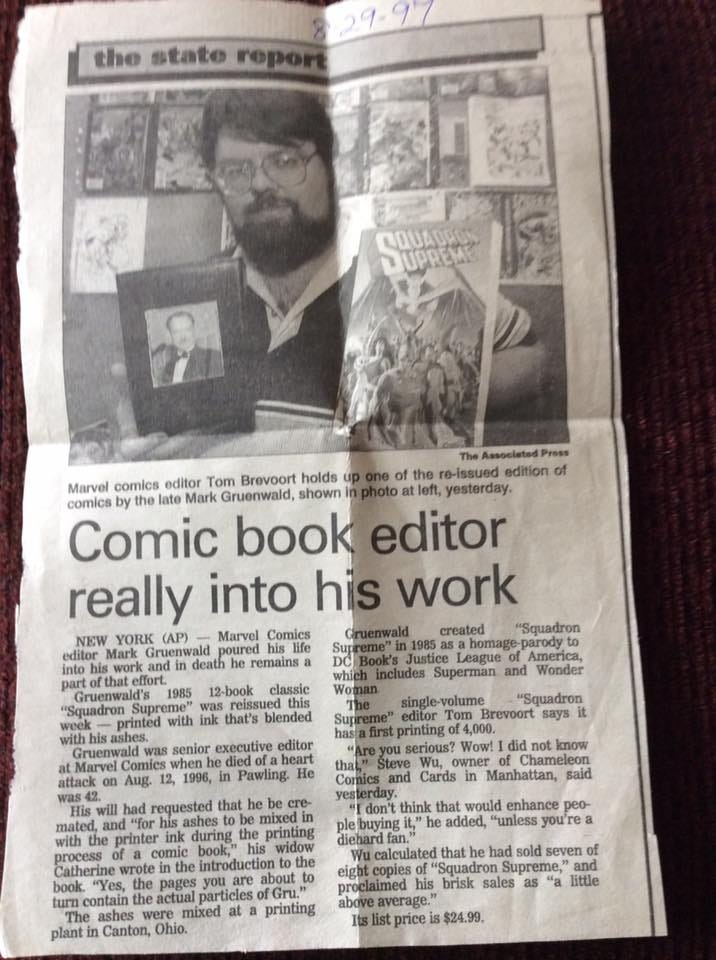
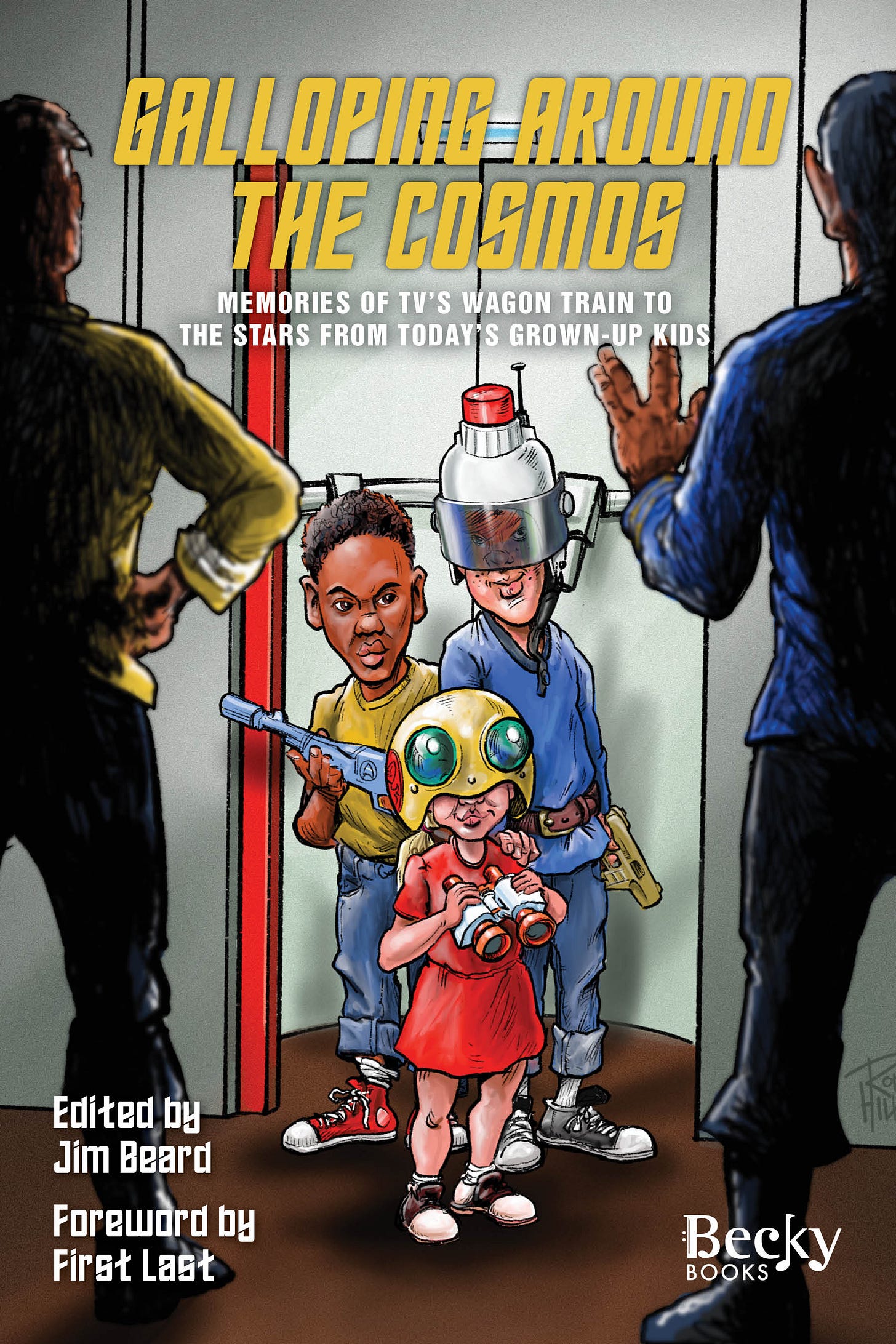
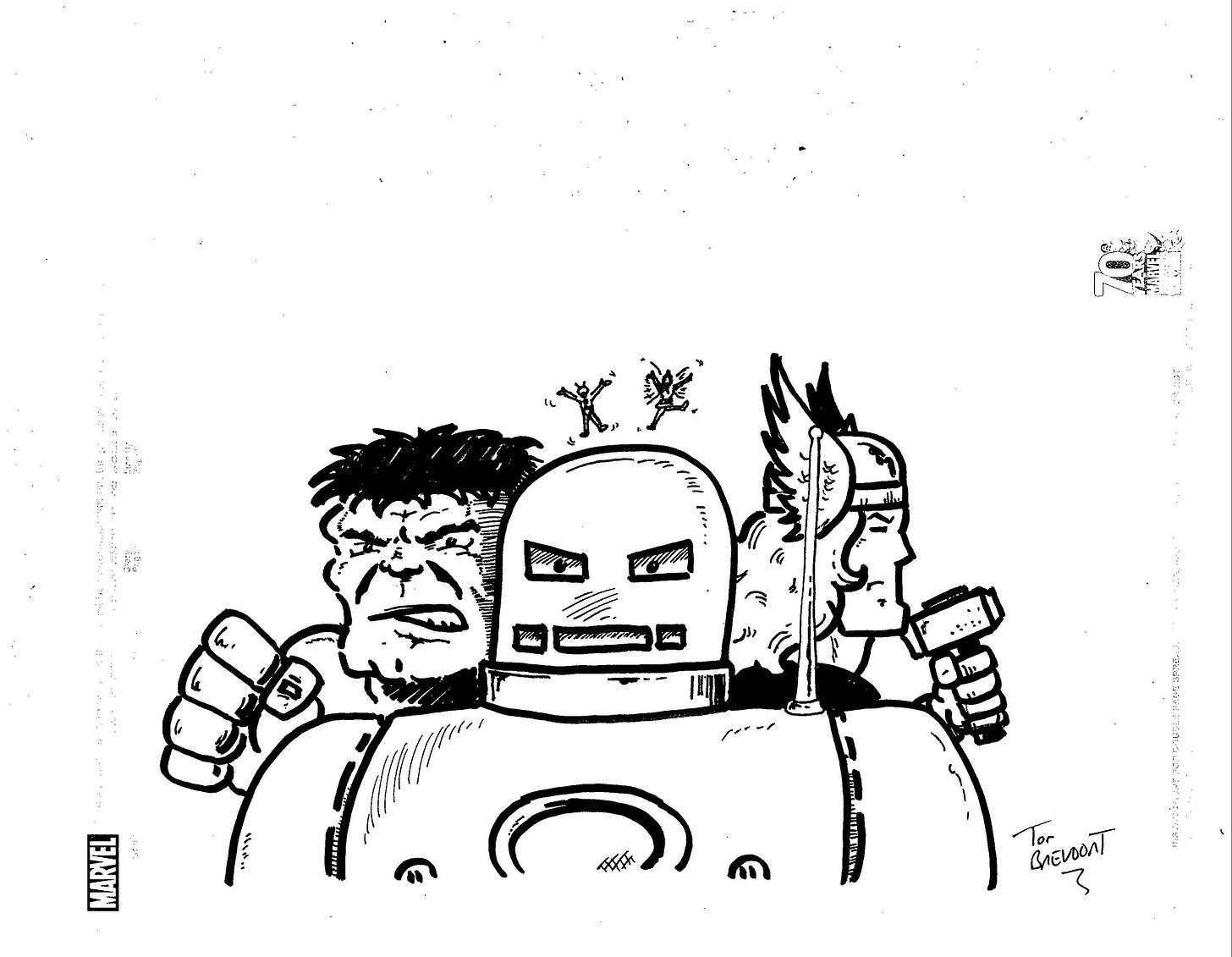
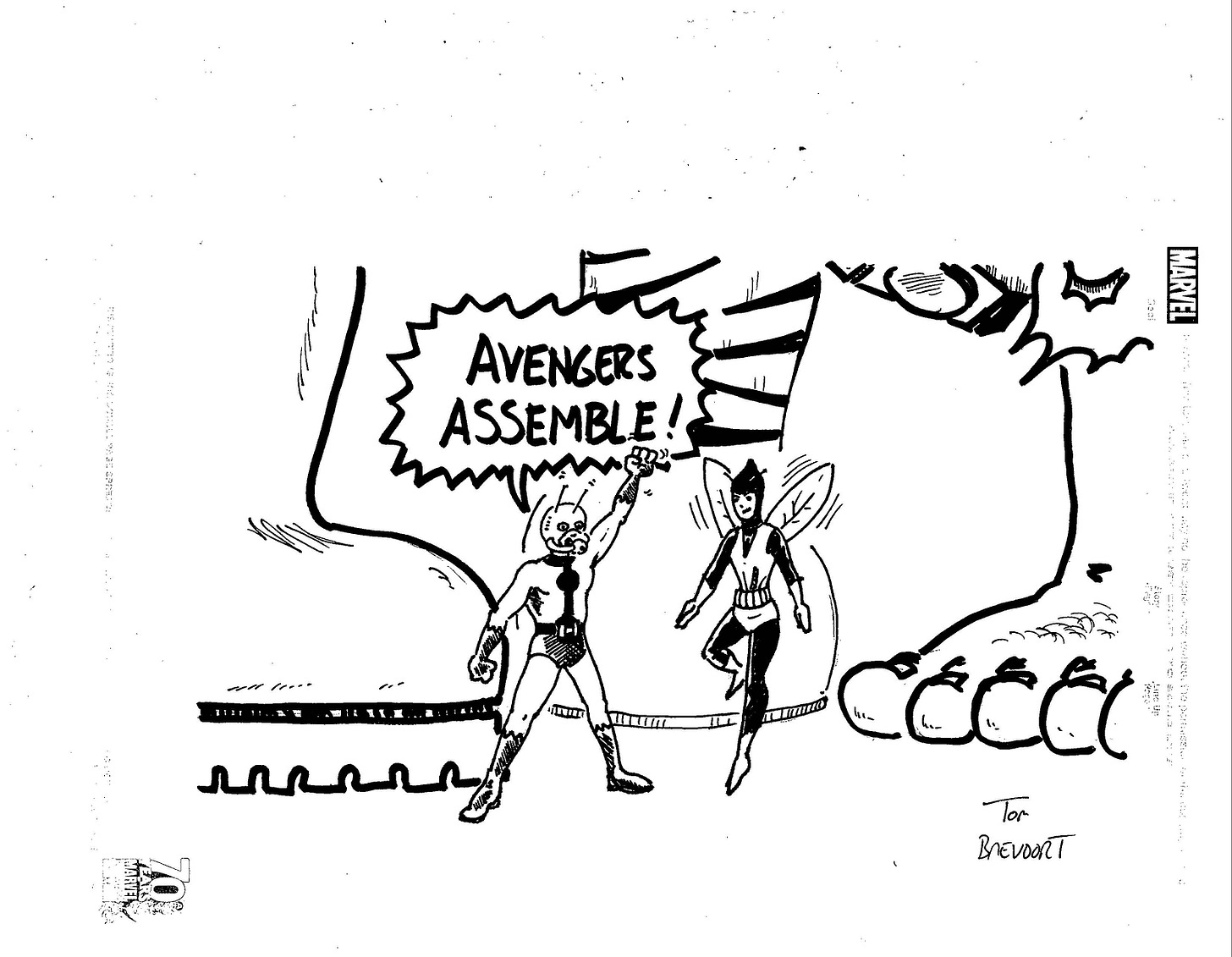



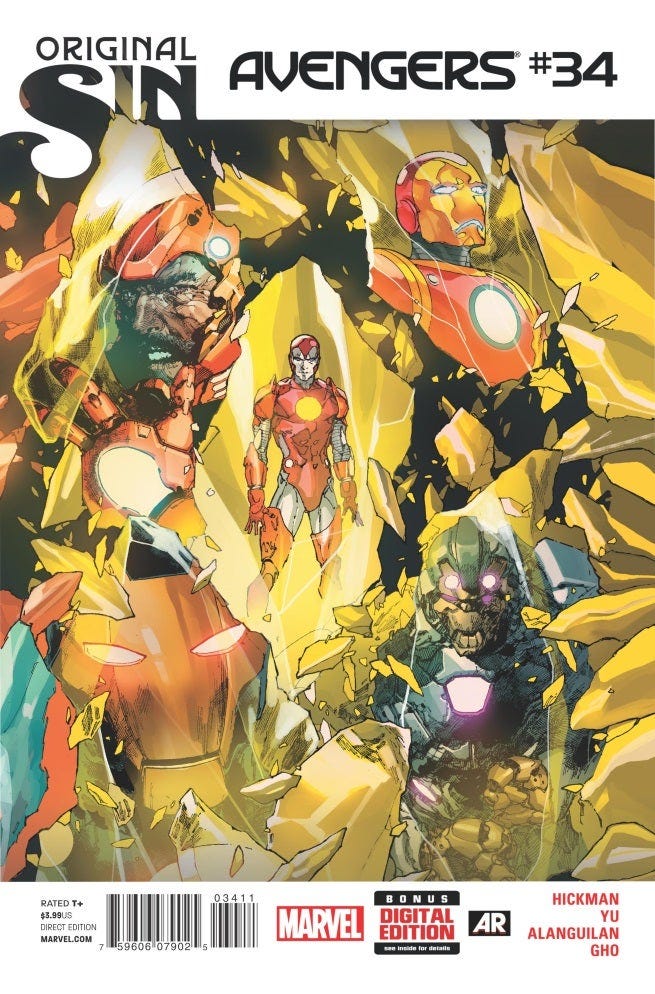
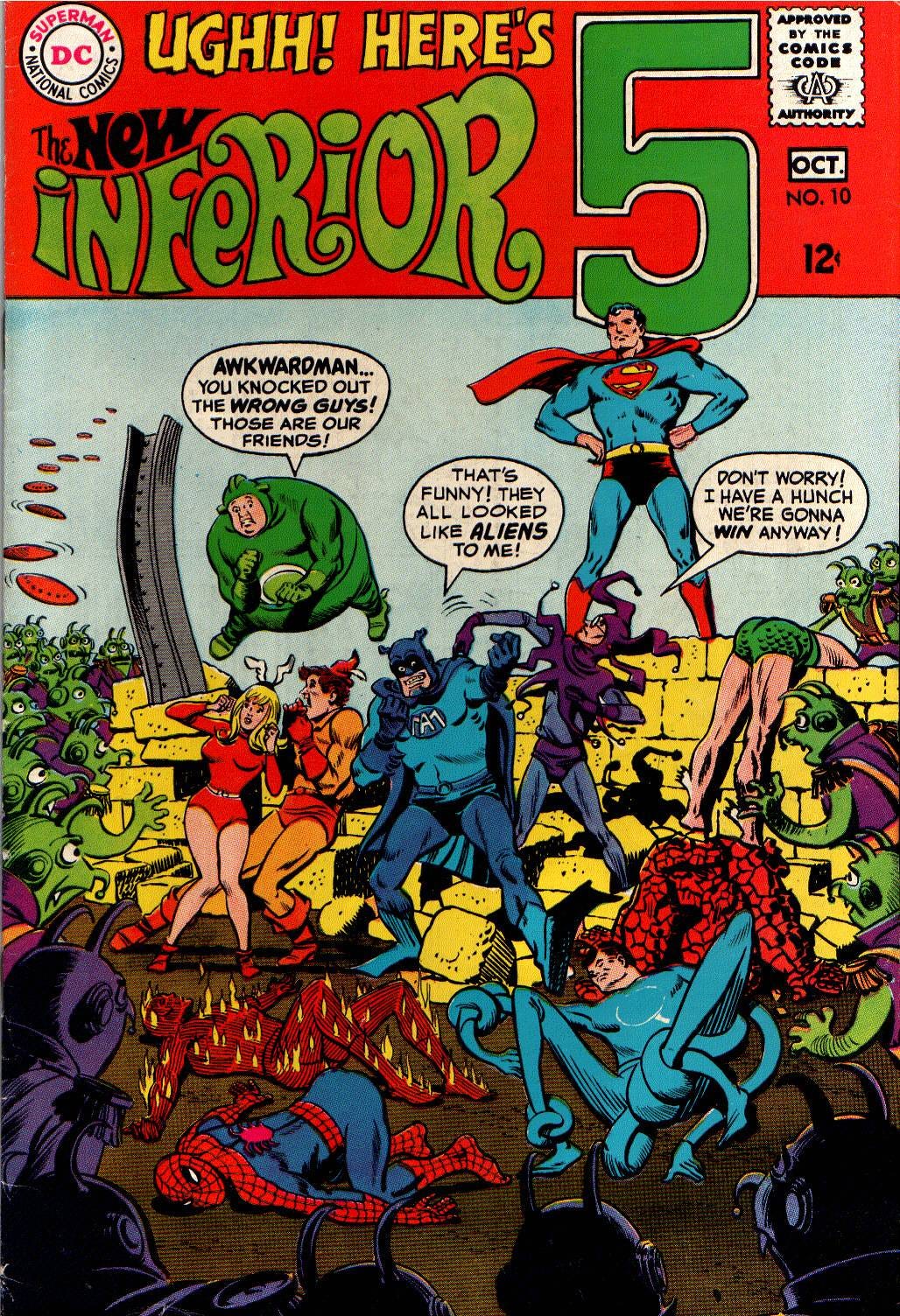

Thanks for sharing your observations on the Clone Saga (and thanks to the commenter who shared the blog link!). It's a genuinely fascinating part of Spidey history for all of the good and bad of the execution and I love hearing people talk about the intentions Vs the reality (even if, upon doing so, you're adding yourself to some great Pro/Anti marriage tally sheet)
I have a question on the mechanics of running an on-going. Taking Ryan North's Fantastic Four as an example (but please swap in a better example if that helps): Do you have any events where you get together and plot out the next year, or is he just writing 5-6 issues ahead, onward until he leaves the series?
Or is there some kind of much more nuanced third option that is the reality?
Thanks!
When it comes to the clone saga, I always enjoyed this seemingly well researched account of it: https://www.benreillytribute.x10host.com/LifeofReilly1.html
I rarely read the comments on substack newsletters, so my apologies if this has been shared already.